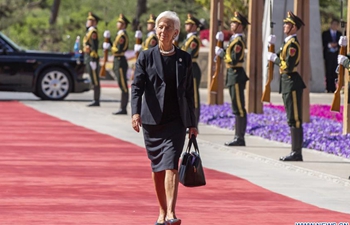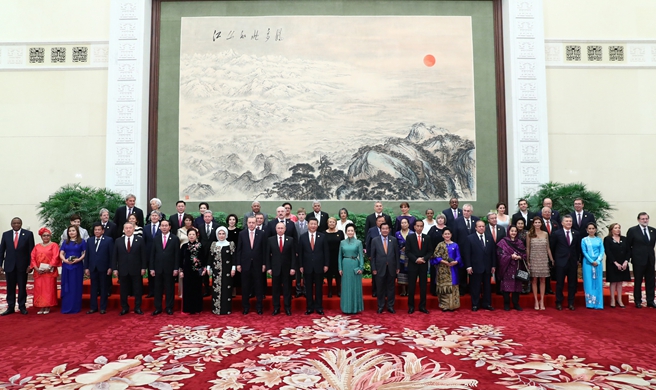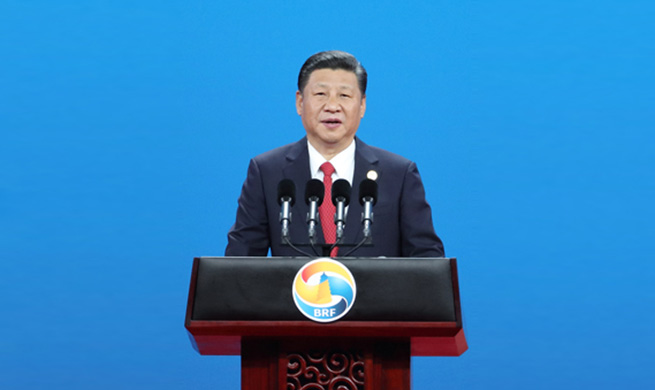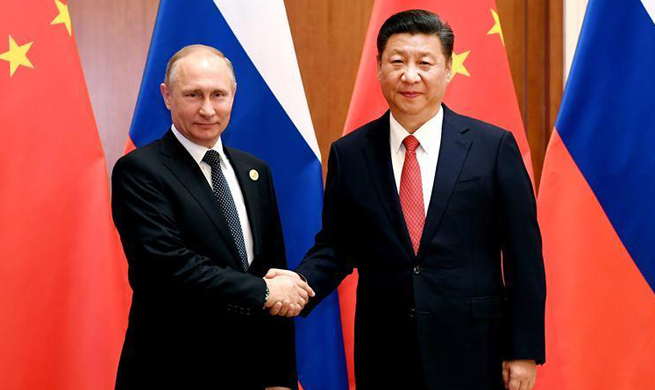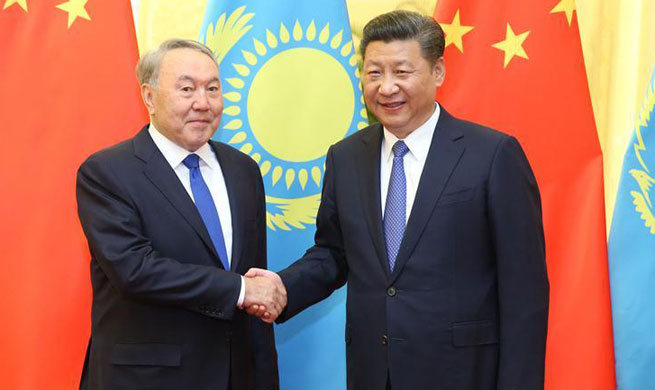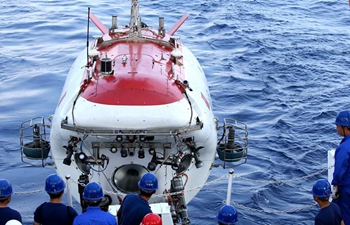by Li Li, Liu Ying
BEIJING/CHENGDU, May 15 (Xinhua) -- When Maciek Czastka first came to Chengdu three years ago, the Polish young man didn't know he would grow so attached to the Chinese city which is now more like his "second hometown."
"I travel a lot. But every time I come back here I feel like home," said Czastka, who has been working in the capital of China's southwestern Sichuan Province for Amber Global, a Polish consulting firm that supports European companies to enter the Chinese market.
Thanks to the Belt and Road Initiative, western China is forming an increasingly close bond with Europe.
"FOLLOW OUR LEAD"
"What I love about this city is to be part of the change that I can see everyday," Czastka told Xinhua in an interview, adding that being part of this change by being engaged into these business process "is very exciting."
The change that the Polish businessman witnesses in Chengdu has been brought to the city through the Belt and Road Initiative, which aims to build a trade and infrastructure network connecting Asia with Europe and Africa along, and beyond the ancient trade routes. Under this initiative, Chengdu, an economic powerhouse of west China, is widely envisioned to be an important gateway to Europe.
The most powerful support for Chengdu to thrive along the Belt and Road is the Chengdu-Europe express railway, which began operation in 2013 to provide direct cargo train services between Chengdu and the Polish city of Lodz, an emerging traffic hub in Europe.
In addition to the Lodz line, which has been extended to cities in Germany and the Netherlands, another two routes have been launched to connect Chengdu with Europe, including a southern route to Turkey, and a northern route to Russia. These transnational rail lines have become a popular logistics route for Chinese trade with Europe, bringing electronics, car parts, clothes and shoes to Europe, and transporting back European food, wine and meat, catering to the Chinese market.
In 2016, a total of 460 freight trains ran between Chengdu and Europe and the number is expected to grow to 1,000 this year. In China, the Chengdu-Europe routes have been extended to other provinces and some southern and eastern cities such as Shenzhen, Xiamen and Ningbo.
"In the past, we had to look to the east and follow other people's lead. Today, we are turning our eyes towards the west and let others follow our lead," said Zhang Chi, Deputy Director of the Chengdu Municipal Port and Logistic Office.
FIRST PORT OF CALL
Born in Lodz in central Poland, Czastka is fully aware of the benefits of doing business with China. Since the Chengdu-Lodz route was opened, Chengdu, together with other cities in west China, has developed close trade ties with the Eastern European country.
In the past, Czastka recalled, mostly high-margin goods were traded between China and Poland. Thanks to the express railway, which has greatly reduced the time and cost of transportation compared with sea freight and air cargo, Poland's signature agricultural products such as fruit juice, wine and mineral water have found their way to the Chinese market, with Chengdu being the first port of call.
According to Czastka, his company now focuses on helping Polish farmers sell their high-quality apples to China via freight trains. Poland is one of the largest apple producers in Europe.
"Because of the Belt and Road Initiative, because of the train connection, more and more Polish products have been recognized by the Chinese consumers," he said.
Besides Poland, said Czastka, the company has also been talking to clients from other European countries such as Czech Republic, Spain and Austria. Upbeat about the future of Chengdu as a logistic center of western China, Czastka said the local government has been very supportive of the development of the Chengdu-Europe railways.
"Chengdu is very effective in solving the problems that we encountered in terms of this connection. The persistence in solving these problems and in investing in these routes shows that it's a long-term strategy," he said.
"IN CHINA, WE DID IT"
The Polish businessman's enthusiasm about the Belt and Road Initiative is shared by Jerome David Gurisch, a French automotive engineer who has lived in China for three years.
Gurisch came to China in 2014 and worked in the central Hubei Province for six month before settling down in Chengdu to help establish a new factory for his company, Dongfeng Peugeot Citroen Automobile (DPCA), a joint venture of French carmaker PSA Peugeot Citroen and Chinese automaker Dongfeng Motor Corporation.
"When we just arrived, there was absolutely nothing here. We started from a scratch," recalled Gurisch.
The Chengdu plant, which opened in September 2016, is the fourth built by the DPCA and the first outside its Hubei headquarters. "It is unimaginable elsewhere in the world to build a car factory of such world-class standards in only 23 month. But in China, we did it," said Gurisch, with a confident smile on his face.
The "Chinese speed" that has marveled the French expert is propelled by the Belt and Road Initiative, which is poised to inject fresh vitality to the development of China's western regions.
Connectivity boosted by the transnational railways, among other favorable policies, has encouraged a growing number of Chinese companies to relocate their capacity from the coastal regions to western cities such as Chengdu, where a new free trade zone has been established.
With an investment of 12.3 billion yuan (2 billion U.S. dollars) and an annual capacity of 320,000 vehicles, DPCA's Chengdu factory now exports a variety of cars to Southeast Asian countries such as Vietnam and Indonesia.
These vehicles will be sold to the European market via cargo trains in the near future, according to the company.






